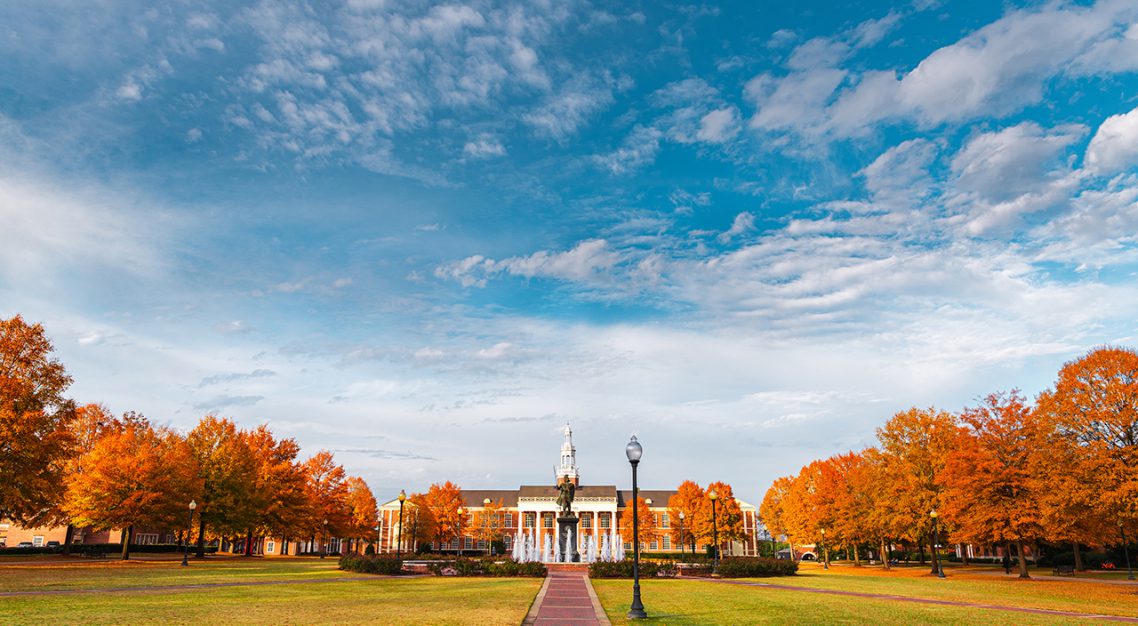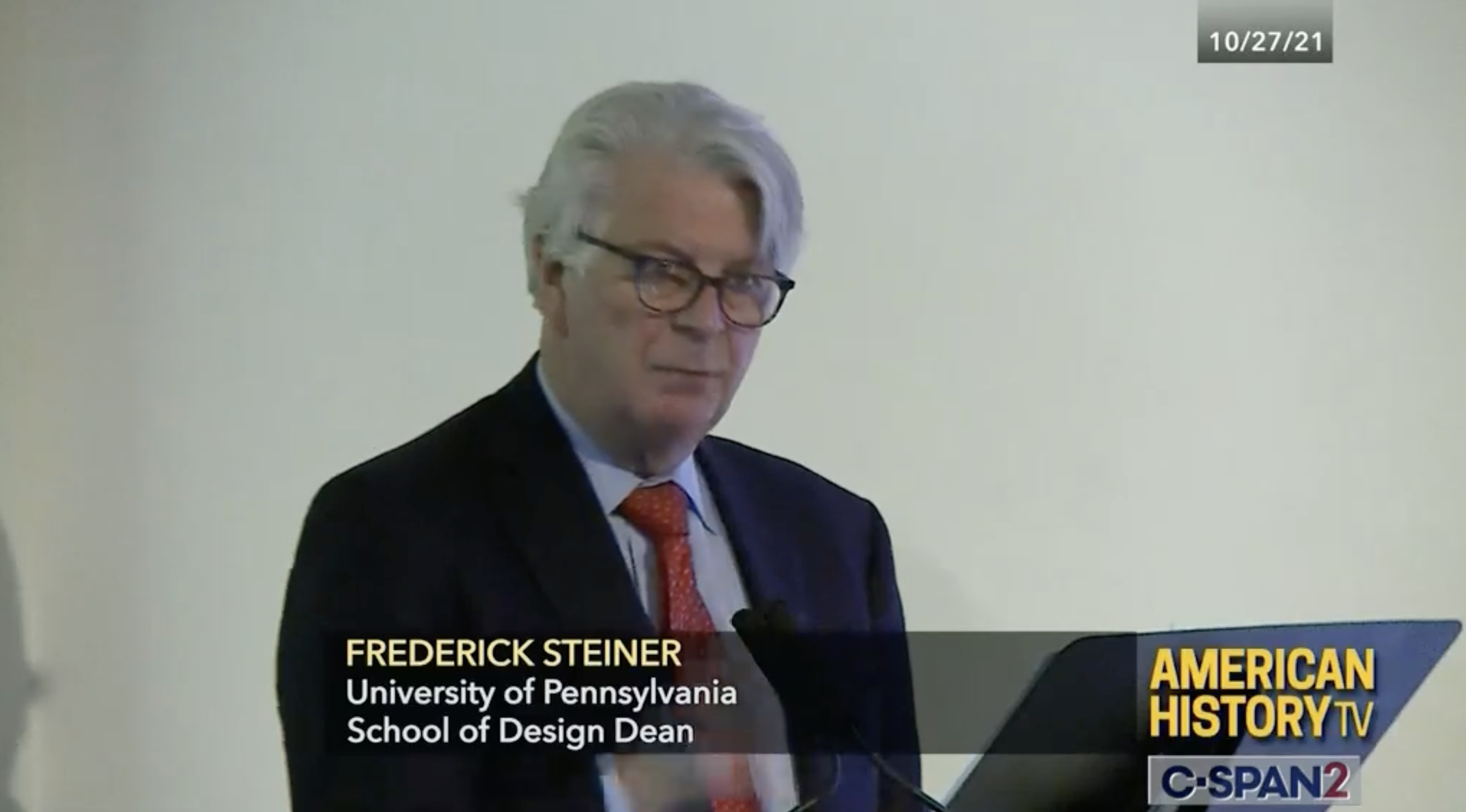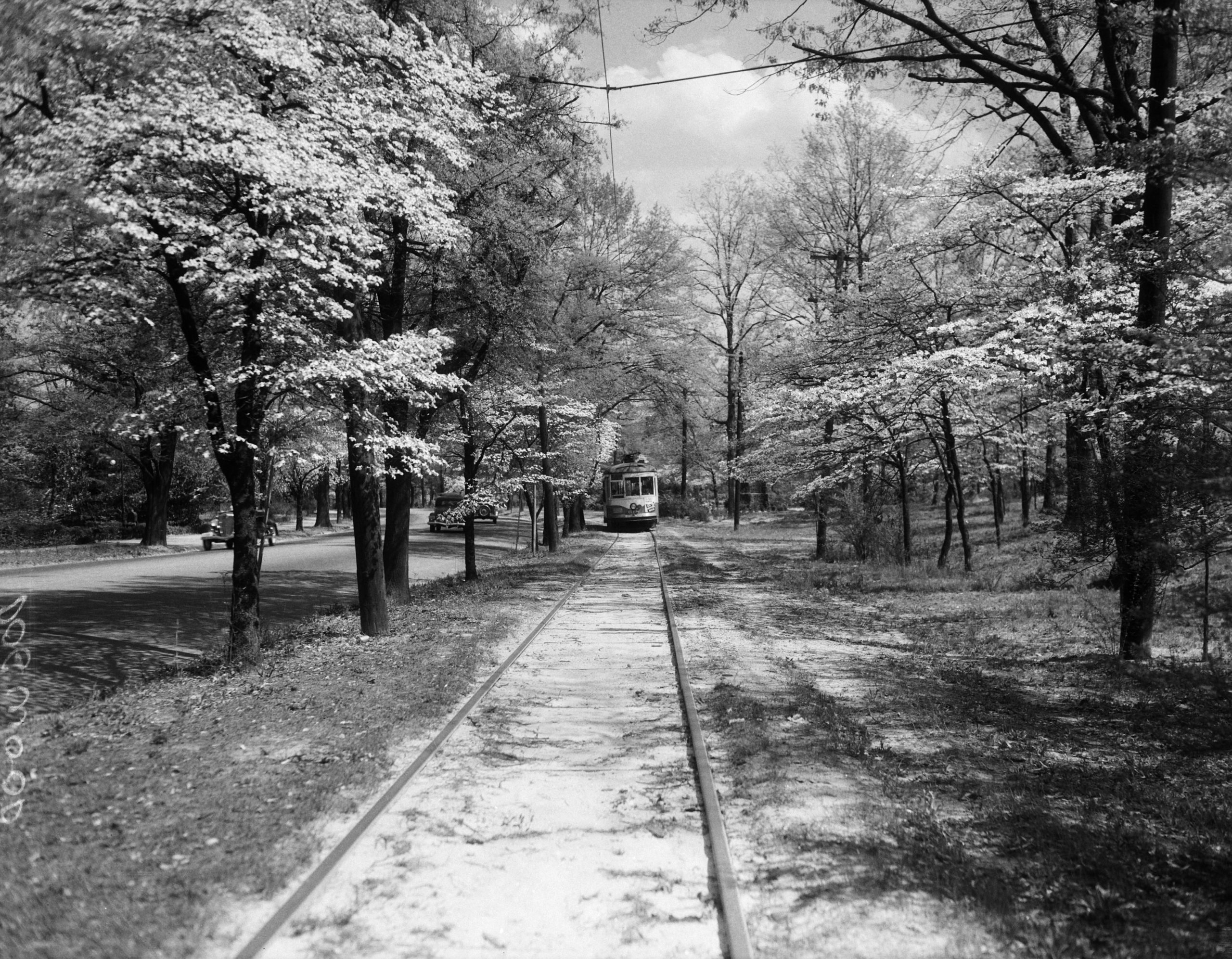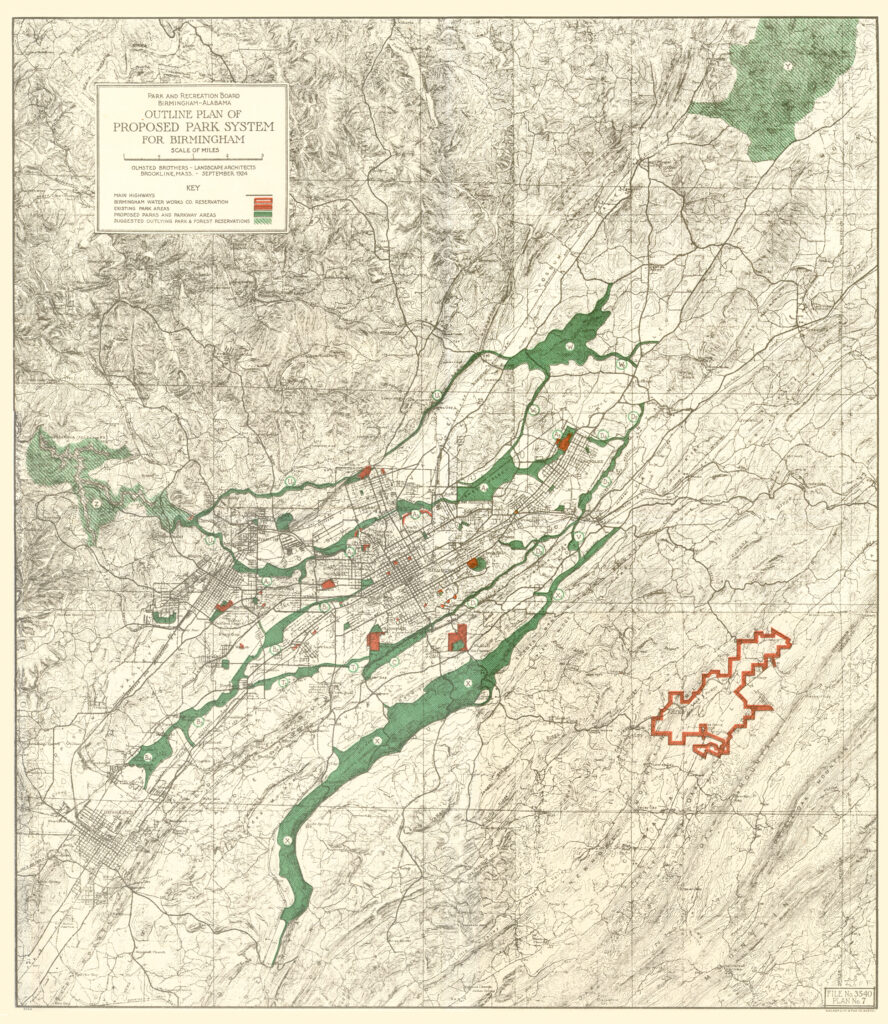
Birmingham’s extant Olmsted legacy includes an impressive plan for a comprehensive park system, the plan for the City’s civic center with its governmental buildings surrounding today’s Linn Park, the site selection and general plan for today’s Samford University, and the site selection and general plan for the Vestavia Country Club.
Olmsted Brothers Plans a Park System for Birmingham, 1924-1925
In 1923, new state legislation provided for the creation of park boards in Alabama cities of more than 100,000 residents. A year later, the Birmingham Park Board selected Olmsted Brothers to address the needs and opportunities of Birmingham parks. Frederick Law Olmsted Jr., working from Olmsted Brothers’ west coast office at Redondo Beach, California, supervised the work of his firm’s principal Southern representatives, Edward Clarke Whiting and William Marquis. The board published A System of Parks and Playgrounds for Birmingham: Preliminary Report upon the Park Problems, Needs, and Opportunities of the City and Its Immediate Surroundings (Job Number 3540) in 1925.
In 1925, the Olmsted Brothers firm gave the Birmingham region a road map for future park development. The plan provided a long-term vision for the acquisition of the region’s most scenic lands and for the development of large parks in the floodplains of area creeks and on mountain tops. Initially, the Park Board allocated funding for acquisition of small parcels and the building of golf courses and a football stadium.
The acquisition of large parcels of floodplain and mountain-top lands began in the 1980s as floodplains were cleared of houses and former mined-over mineral lands were released for sale. Today, thousands of acres now serve as the core of the Ruffner Mountain Nature Preserve and the Red Mountain Park, providing forested slopes and meadows for hiking and recreation within minutes of the city center.
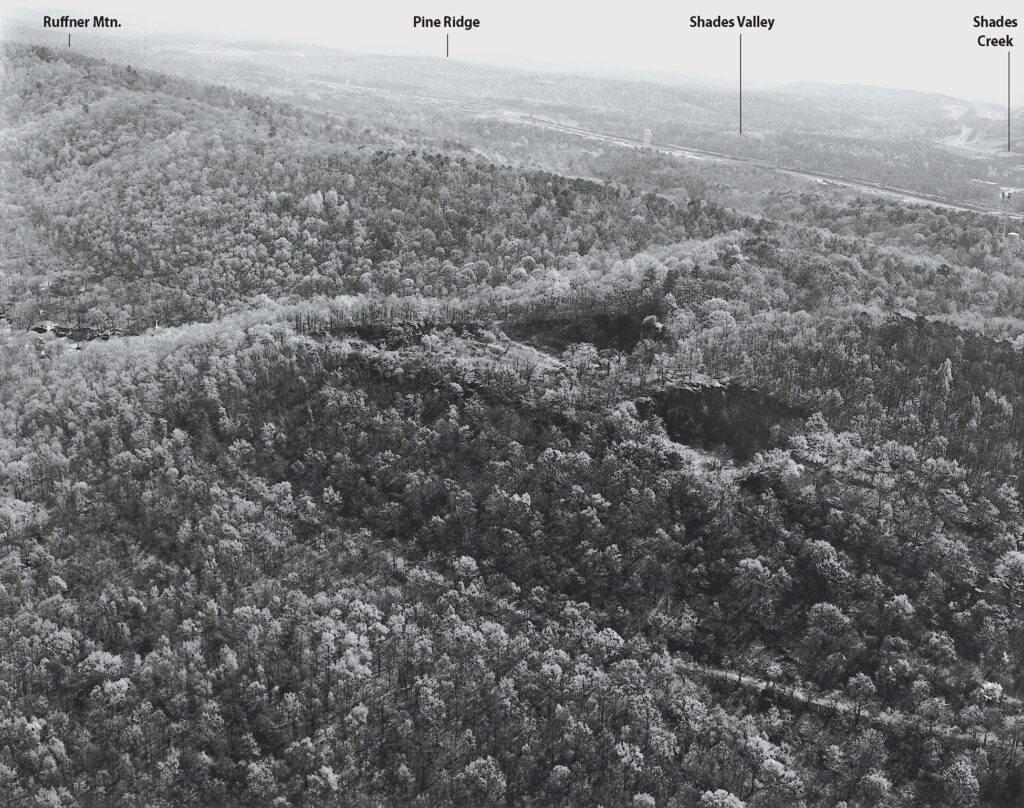
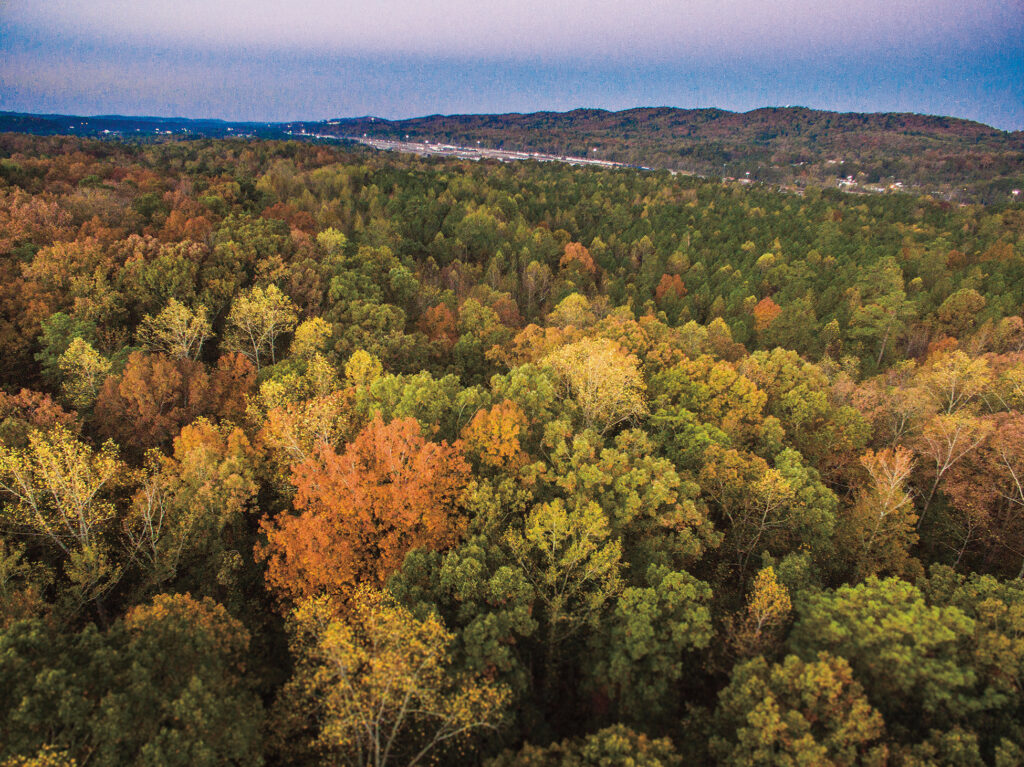
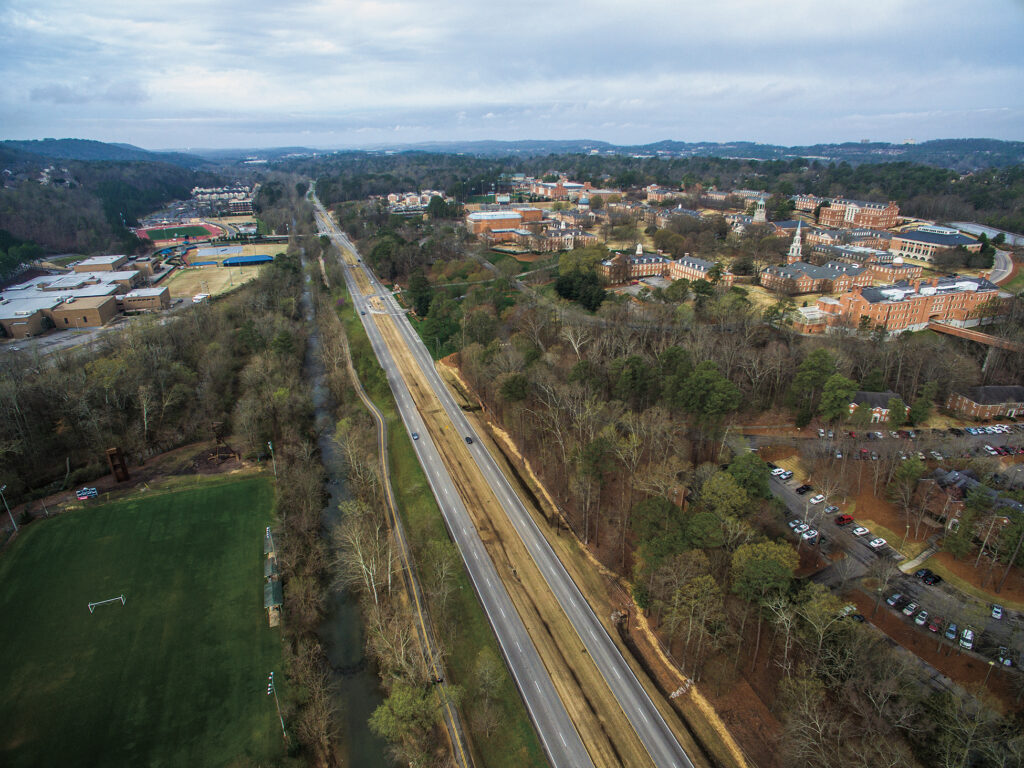
The Olmsted park plan remains relevant and inspires current park stewards and advocates for open space and trail development to consult its recommendations and to find inspiration as well as persuasive language and authority to help safeguard scenic resources of our region.
Publications Documenting Birmingham’s Olmsted Legacy
Birmingham Historical Society publications exploring the region’s Olmsted legacy are available for purchase at BirminghamHistoricalSociety.com. They include Olmsted Brothers’ A Park System for Birmingham, a faithful reprint of the 1925 plan; The Olmsted Vision: Parks for Birmingham, an illustrated review of past and ongoing work to fulfill the regional plan; Hand Down Unharmed: Olmsted Files on Birmingham Parks, 1920-1925, reprints of the correspondence between the Olmsted office and Birmingham park advocates; Mountain Brook: A Historic American Landscape, showcasing the Historic American Landscapes Survey documentation of this 1920s residential community; Shades Creek: Flowing Through Time, a history of the natural and man-made resources and efforts to both develop and conserve them; and Birmingham, The City Beautiful: Compliments of G. Ward, a profile of the city’s mayor and his long-term conservation efforts.
In commemoration of the 200th birthday of Frederick Law Olmsted, the Society summarized the Olmsted Brothers’ work in Birmingham from 1924 to 1951 in a newsletter: Birmingham’s Olmsted Legacy, January 2022.









